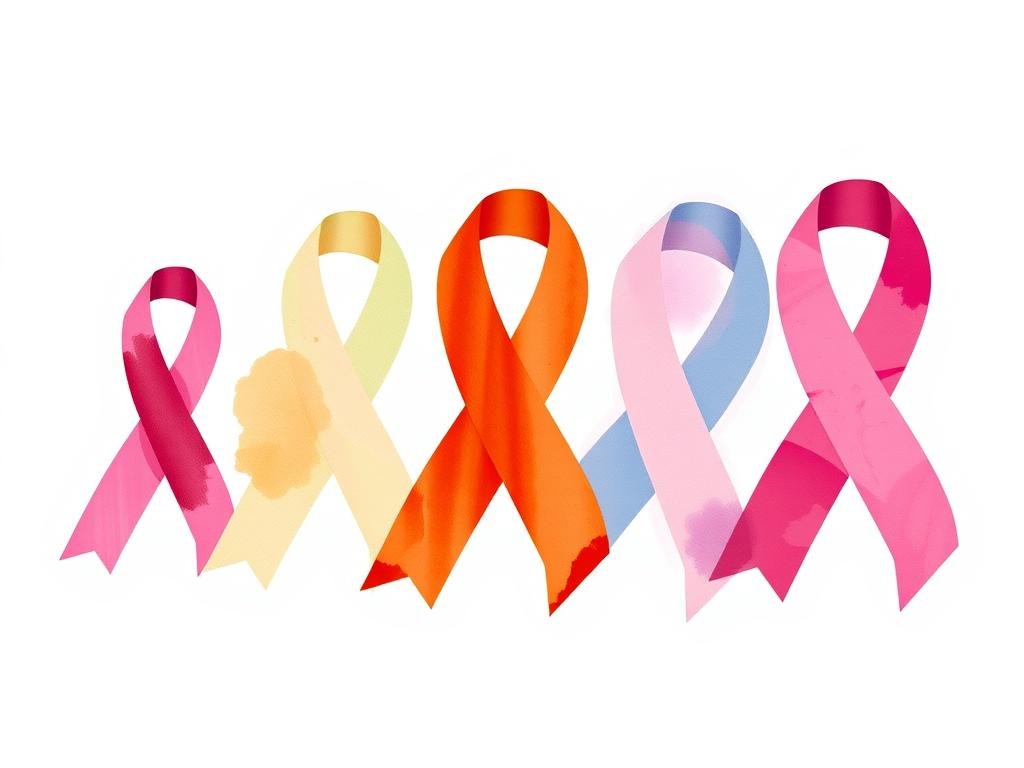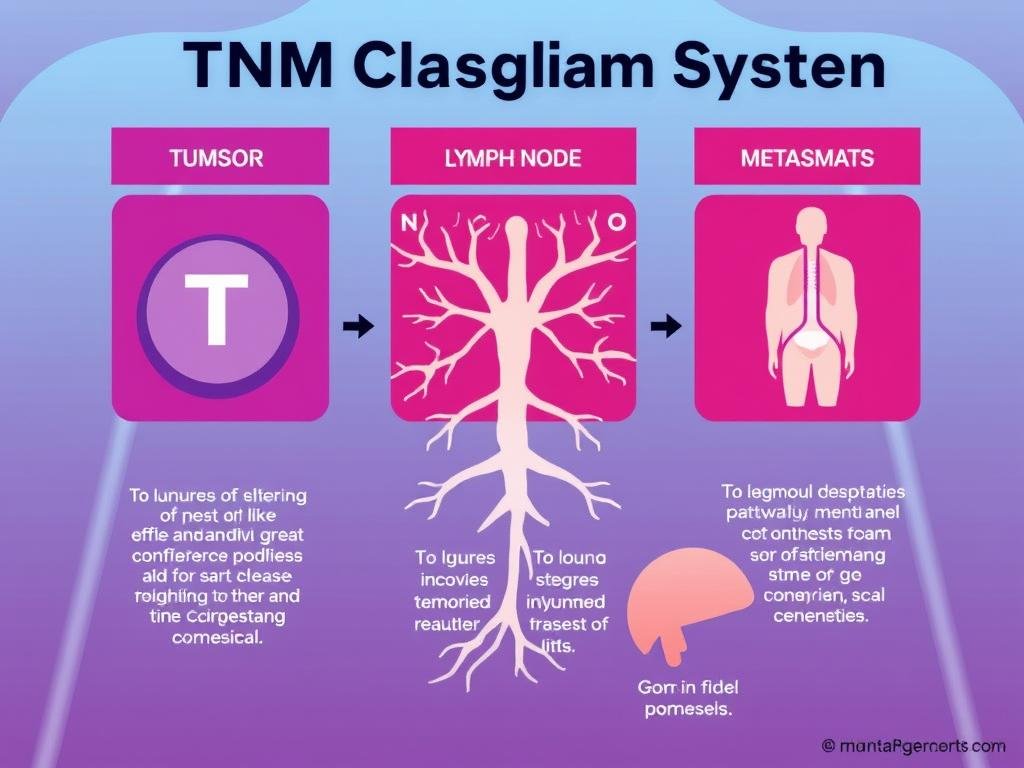This article will discuss the breast cancer stages and survival rates. As the sun sets on another year, we face the reality of breast cancer affecting many lives worldwide. Yet, there’s hope thanks to cancer research and treatment progress. This guide aims to help you understand breast cancer stages, survival rates, and what affects prognosis for 2024.
Breast cancer is a complex disease that needs a detailed approach. By learning about it, we gain knowledge and hope. This understanding helps us face challenges with confidence.
Key Takeaways
- Understand the various stages of breast cancer and how they impact survival rates
- Explore the latest advancements in breast cancer diagnosis and treatment
- Gain insights into the factors that influence prognosis, including molecular subtypes
- Discover the role of emerging therapies, such as immunotherapy and targeted treatments
- Learn about the importance of early detection and preventive measures
Understanding Breast Cancer Diagnosis: A Comprehensive Overview
Finding breast cancer early is key for better treatment and survival. This guide will cover symptoms, screening methods, and the role of mammograms in early detection.
Common Symptoms and Warning Signs
Breast cancer can show in many ways, like a lump or thickening, changes in shape or size, nipple discharge, and skin issues. It’s vital to know these signs and talk to a doctor if you notice anything unusual.
Initial Screening and Diagnostic Methods
Early detection starts with a clinical breast exam by a healthcare provider. They look for any oddities. Tests like ultrasound, MRI, and biopsy might follow to check for tumors.
The Role of Mammograms in Early Detection
Mammograms are key for finding breast cancer early. They use low-dose X-rays to spot changes in breast tissue. Women over 40 should get a mammogram every year to catch tumors early.
Knowing how to detect breast cancer early is crucial. By staying informed and watching your breast health, you can get help quickly. This can lead to better treatment and survival chances.
Breast Cancer Stages and Survival Rates: What You Need to Know
It’s important to know about the stages of breast cancer and survival rates. This knowledge helps in understanding the prognosis and treatment options. Breast cancer is complex and can be classified into different stages. Each stage has its own characteristics and affects the patient’s health and recovery.
Breast cancer stages range from 0 to IV. Stage 0 is the earliest and most treatable form. Stage IV is the most advanced and metastatic stage. Survival rates vary based on factors like tumor size, lymph node involvement, and distant metastases.
| Breast Cancer Stage | 5-Year Survival Rate |
|---|---|
| Stage 0 | 100% |
| Stage I | 99% |
| Stage II | 93% |
| Stage III | 72% |
| Stage IV | 22% |
These survival rates are based on population data. Individual outcomes can vary. Early detection and prompt treatment are crucial for better prognosis. Regular screening, like mammograms, can help find the disease early, when treatment is most effective.
Knowing about breast cancer stages and survival rates helps individuals make informed healthcare decisions. They can work with their medical team to create a personalized treatment plan. This plan addresses their specific needs and circumstances.

TNM Classification System Explained
Understanding the stage of breast cancer is key for treatment and prognosis. The TNM system is used to stage breast cancer. It looks at three main factors: Tumor size, lymph node involvement, and metastasis.
Tumor Size and Growth Patterns
The “T” in TNM stands for Tumor. It measures the size and growth of the primary tumor. Tumors are classified from T1 to T4. T1 is a small tumor, usually under 2 cm, and T4 is a larger, more advanced tumor.
The specific T stage tells us about the tumor’s growth and spread in the breast.
Lymph Node Involvement Assessment
The “N” in TNM represents lymph node involvement. Cancer can spread to nearby lymph nodes. The number and location of affected nodes are important for determining the cancer stage.
Lymph node status is classified from N0 (no involvement) to N3 (extensive involvement).
Metastasis Evaluation Process
The “M” in TNM stands for Metastasis. It refers to cancer cells spreading to distant organs like the lungs, liver, or bones. The M stage can be either M0 (no distant metastasis) or M1 (presence of distant metastasis).
This information is crucial for assessing the metastatic breast cancer prognosis and choosing the right treatment.
By combining T, N, and M classifications, healthcare providers can determine the overall stage of breast cancer stages and survival rates. This ranges from stage I (the earliest, most treatable stage) to stage IV (advanced, metastatic cancer). This system helps guide treatment decisions and gives insights into the patient’s potential outcomes.

Stage-Specific Treatment Approaches
When it comes to breast cancer treatment options, the approach is tailored to the specific stage of breast cancer and survival rates. Understanding the stage of the disease is crucial in determining the most effective treatment plan for optimal outcomes.
At the early stages, such as stage 1 or 2, the primary treatment often involves surgical removal of the tumor, known as lumpectomy or mastectomy. This may be followed by radiation therapy to target any remaining cancer cells. In some cases, chemotherapy or hormone therapy may also be recommended to reduce the risk of recurrence.
- For stage 3 breast cancer, a combination of treatments may be employed, including chemotherapy, radiation therapy, and targeted therapies. The goal is to shrink the tumor and prevent the spread of cancer to other parts of the body.
- In stage 4 or metastatic breast cancer, the focus shifts to managing the disease and improving the patient’s quality of life. Palliative care, targeted therapies, and immunotherapy may be utilized to control the spread of the cancer and alleviate symptoms.
The selection of breast cancer treatment options is a collaborative process between the patient and their healthcare team. They consider the specific characteristics of the cancer, the individual’s overall health, and personal preferences. Regular monitoring and adjustments to the treatment plan are crucial to ensure the best possible outcomes.
“Personalized treatment plans are essential in the fight against breast cancer, as each case is unique and requires a tailored approach.”

Molecular Subtypes and Their Impact on Prognosis
Breast cancer is a complex disease with different molecular subtypes. These subtypes greatly affect how well a patient will do and what treatments work best. Knowing about these subtypes is key to creating care plans that work for each person.
Hormone Receptor-Positive Cases
Hormone receptor-positive breast cancers are the most common. They have estrogen and/or progesterone receptors. These cancers usually have a better outlook and often respond well to hormone therapies like tamoxifen and aromatase inhibitors.
HER2-Positive Breast Cancer
HER2-positive breast cancer grows faster because of too much HER2 protein. But, new treatments like trastuzumab (Herceptin) have made a big difference. This has improved the outlook for those with this type.
Triple-Negative Breast Cancer Outlook
Triple-negative breast cancer is the toughest to deal with. It doesn’t have hormone receptors or HER2. This type grows faster and has a worse outlook. Researchers are working hard to find better treatments, including new drugs and chemotherapy.
It’s very important to know the molecular subtype of breast cancer. This helps doctors make the best treatment plans. By understanding each subtype’s unique traits, doctors can tailor treatments to help patients fight cancer more effectively.
Factors Affecting Survival Rates
Several key factors can greatly impact breast cancer survival rates. It’s important for both healthcare professionals and patients to understand these elements. This knowledge helps navigate the complexities of breast cancer.
The stage of the disease at diagnosis is a major factor. Early detection leads to better survival rates. Those with early-stage breast cancer generally have higher survival rates than those with advanced-stage disease.
Age is also a significant factor in breast cancer survival rates. Younger people, especially those under 40, often face more aggressive cancer. This can lead to a poorer prognosis compared to older patients.
The patient’s overall health and medical conditions also play a role. Those with a strong immune system and good health tend to respond better to treatment. This increases their chances of long-term survival.
The type of treatment and how well the patient responds to it are crucial. Patients who do well with their treatment plan, whether through surgery, radiation, or other therapies, usually have better outcomes.
| Factor | Impact on Breast Cancer Survival Rates |
|---|---|
| Cancer Stage | Early-stage cancers have higher survival rates |
| Patient Age | Younger patients (under 40) may have poorer prognosis |
| Overall Health | Good general health and absence of comorbidities improve survival |
| Treatment Response | Patients who respond well to treatment have better outcomes |
Understanding these factors helps healthcare professionals give more accurate breast cancer prognosis. They can then tailor treatment plans to improve long-term survival chances for their patients.
Advanced Treatment Options and Clinical Trials
Researchers are finding new ways to treat breast cancer. This is especially true for advanced or metastatic cases. These new treatments aim to be more effective and targeted, offering hope to those fighting this disease.
Immunotherapy Breakthroughs
Immunotherapy is a fast-growing area in cancer treatment. It uses the body’s immune system to fight cancer cells. Studies show it works well for some breast cancer types, especially in cases where other treatments fail.
Targeted Therapy Developments
Targeted therapies focus on specific cancer growth paths. They are made for each patient’s tumor, making treatment more precise. This approach is becoming a key part of breast cancer treatment.
Emerging Treatment Protocols
Researchers are also looking into new treatment methods. These include combining therapies, new drug delivery ways, and mixing traditional and complementary treatments. These new ideas could lead to better treatment results and quality of life for patients with breast cancer treatment options and metastatic breast cancer.
As breast cancer research grows, patients and doctors can learn about new treatments and trials. This knowledge helps in the ongoing battle against breast cancer. It brings hope and better outcomes for those dealing with this disease.
Living with Breast Cancer: Support and Recovery
Life after a breast cancer diagnosis is both challenging and profound. Yet, with the right support and strategies, survivors can regain control and start a fulfilling recovery. This section looks at resources and approaches to help breast cancer patients manage their journey’s physical, emotional, and practical sides.
Coping with Recurrence Concerns
Many breast cancer survivors worry about recurrence. Breast cancer recurrence is a scary thought, but there are ways to deal with it. Regular check-ups, talking openly with doctors, and joining support groups can help survivors feel empowered and in control.
Navigating Long-Term Care and Survivorship
As breast cancer treatment options improve, so does long-term care and survivorship. Survivors may need ongoing care, rehabilitation, and support for treatment’s lasting effects. Comprehensive survivorship programs, tailored to each person’s needs, offer invaluable guidance and resources during recovery.
Building a Support Network
- Support groups, both in-person and online, offer a sense of community and shared understanding.
- Family, friends, and caregivers provide emotional support and practical help, easing daily challenges of living with breast cancer.
- Talking to mental health professionals, like therapists or counselors, is key to dealing with the emotional impact of diagnosis and treatment.
By using these resources and strategies, breast cancer survivors can face the complexities of living with the disease. They can regain their well-being and look forward to a future filled with hope, resilience, and purpose.
| Support Resources | Benefits |
|---|---|
| Support Groups | Emotional support, shared experiences, and a sense of community |
| Survivorship Programs | Comprehensive care, rehabilitation, and guidance for long-term recovery |
| Counseling and Therapy | Professional support for managing the emotional and psychological impacts of breast cancer |
“The biggest lesson I’ve learned is that you have to take care of yourself, because no one else can do it for you.”- Jane Doe, Breast Cancer Survivor
Lifestyle Changes and Prevention Strategies
It’s important for everyone to take care of their breast health. By making healthy choices, you can lower your risk of breast cancer. Eating a diet full of fruits, veggies, and whole grains boosts your immune system and overall health.
Exercising regularly, like walking, swimming, or yoga, keeps you in shape. It also helps manage stress and keeps your weight healthy. Drinking less alcohol and not smoking are also good steps to take.
Getting regular breast cancer screenings is key. This includes self-exams and yearly mammograms. Being proactive and following screening guidelines can help find problems early. Talk to your doctor to create a screening plan that fits your needs.
FAQ
What are the different stages of breast cancer, and how do they affect the survival rates?
Breast cancer is divided into stages 0 through IV. These stages depend on the tumor size, lymph node involvement, and metastasis. Early-stage cancers (stages 0-II) have higher survival rates. Advanced-stage cancers (stages III-IV) have lower rates.
The survival rates vary based on the cancer subtype, treatment response, and patient’s health.
What are the common symptoms and warning signs of breast cancer?
Symptoms include a lump or thickening in the breast, changes in breast size or shape, and nipple discharge. Also, changes in skin texture or appearance are signs. It’s important to report any unusual changes to your healthcare provider.
How do mammograms and other screening methods help in the early detection of breast cancer?
Mammograms are the main tool for early detection. They are low-dose x-rays of the breast. Regular mammograms can spot changes before they are felt.
Other methods like ultrasounds and MRI may also be used. They provide more information and help with mammogram findings.
Can you explain the TNM classification system used in breast cancer staging?
The TNM system stages breast cancer based on Tumor size, lymph Node involvement, and Metastasis. The T category describes the tumor size and extent. The N category shows lymph node involvement. The M category checks for metastasis.
This system helps guide treatment and predict prognosis.
What are the different treatment options available for breast cancer patients?
Treatment often includes surgery, radiation, chemotherapy, hormone therapy, and targeted therapies. The plan depends on the cancer stage, subtype, and patient’s health. Early-stage cancers may be treated with surgery and/or radiation.
Advanced cancers may need more treatments, including systemic therapies.
How do the different molecular subtypes of breast cancer affect prognosis and treatment?
Breast cancer subtypes are based on receptor presence. Hormone receptor-positive cancers have a better prognosis and respond to hormone therapies. HER2-positive cancers are aggressive but can be treated with targeted therapies.
Triple-negative cancers have a poorer prognosis but may respond to specific chemotherapy.
What factors can influence the survival rates of breast cancer patients?
Survival rates depend on the cancer stage, patient’s age, health, and treatment response. Early detection and treatment are key. The cancer subtype, genetic mutations, and lifestyle choices also play a role.
What are some of the advanced treatment options and ongoing clinical trials for breast cancer?
New treatments include immunotherapy and targeted therapies. Clinical trials explore new approaches and combination therapies. These aim to improve outcomes for advanced or metastatic disease.
How can breast cancer patients and survivors cope with the challenges of the disease and its treatment?
Coping with breast cancer is emotionally and physically tough. Support resources like counseling and support groups are crucial. They help manage side effects and fear of recurrence.
Living a healthy lifestyle, exercising regularly, and seeking emotional support are also beneficial.
What lifestyle changes and prevention strategies can help reduce the risk of breast cancer or its recurrence?
A healthy lifestyle can help prevent and reduce recurrence risk. Eat a balanced diet, exercise regularly, limit alcohol, and avoid tobacco. Adhering to screening guidelines, like mammograms and clinical breast exams, is also important.


